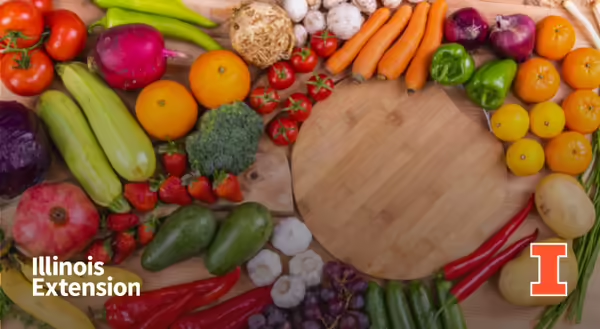
Most of us know at least one person who has been affected by cancer. As we age, the risk of getting cancer increases. In fact, eighty percent of those diagnosed with cancer are 55 years of age or older. While we may not be able to prevent every cancer, we can help lower our risk. Our diet and food choices are a protective factor, along with physical activity, breastfeeding, HPV and Hepatitis B vaccines, and limited exposures to smoking, alcohol and the sun.
Research shows that a diet of mostly plant-based foods, such as fruits, vegetables, whole grains, and legumes play a role in protecting against cancer. These plant-based foods contain phytonutrients, including antioxidants, which are compounds that help protect our body’s cells from damage; damage which could lead to cancer. The American Institute for Cancer Research (AICR) recommends following the “New American Plate” model, which aims for at least two-thirds of our plate coming from plant foods, and no more than one-third of our plate coming from animal foods. It’s encouraged to eat foods that are minimally processed, rather than frozen prepared and packaged meals or processed meats like sausages, bacon, and deli meats. When choosing meat, aim for fish, poultry, and lean meats. Meats that have been preserved by smoking, curing, or salting have added chemicals that have been found to increase the risk of cancer.
Plant-based foods also contain dietary fiber, which has been shown to lower the risk of colorectal cancer. The AICR recommends at least 30 grams of dietary fiber each day. Whole grain sources include whole grain bread and pasta, brown rice, and oats. A tweak in our dietary habits could reduce our risk of cancer and other chronic diseases.
Veggie Hummus Pita Pocket
2 Tablespoons hummus
1 whole wheat pita pocket
¼ cup fresh spinach or salad greens
1 Tablespoon chopped red onion
2 Tablespoons shredded carrots
2 Tablespoons thinly sliced cucumber
2 Tablespoons jar roasted red peppers, drained
1 Tablespoon balsamic vinaigrette
1 Tablespoon crumbled feta cheese
Spread hummus inside the pita pocket. Layer with spinach or salad greens, red onion, carrots, cucumber, and roasted red peppers. Drizzle with balsamic vinaigrette and top with feta cheese.
Yield: 1 serving
Nutrition Facts (per serving): 240 calories, 7 grams fat, 630 milligrams sodium, 38 grams carbohydrate, 1 gram fiber, 11 grams protein
Sources:
American Cancer Society, Cancer Facts and Figures 2022.
American Institute for Cancer Research, The New American Plate vs. MyPlate: What’s the Difference?, 2021
PHOTO CREDIT: Photo by Engin Akyurt on Unsplash
ABOUT THE AUTHOR: Jenna Smith is a Nutrition and Wellness Educator with University of Illinois Extension, serving Livingston, McLean, and Woodford Counties. Smith uses her experience as a registered dietitian nutritionist to deliver impactful information and cutting-edge programs to Livingston, McLean, and Woodford Counties and beyond.
This blog post originally appeared in the Pantagraph on October 26, 2022.